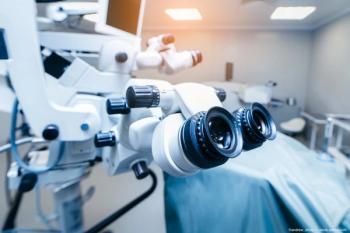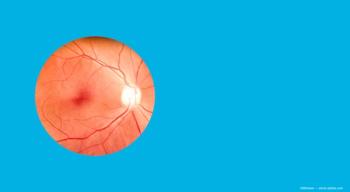
Non-contact technology offers easy measurement of central pachymetry
Bonita Springs, FL-The rotating Scheimpflug camera-based Pentacam system (Oculus) seems to provide an easy-to-use tool for obtaining reliable corneal pachymetry measurements, said Stephen E. Pascucci, MD, a private practitioner in Bonita Springs, FL.
He evaluated the performance of the newer technology in a single-center study comparing it with ultrasound pachymetry for measuring central corneal thickness. The study enrolled 50 eyes with normal, unoperated corneas. Although the measurement obtained with the two techniques differed in 47 (94%) of 50 eyes, the mean, range, and standard deviation values for both technologies were similar. The mean of the differences of the two devices was only 7 μm, Dr. Pascucci said.
"The Pentacam offers non-contact technology that is technician-and patient-friendly and has multiple applications in evaluating and educating patients because it can image the entire anterior chamber from the anterior surface of the cornea to the posterior surface of the crystalline lens and generates anterior and posterior corneal topography maps," said Dr. Pascucci. "Having recently acquired this new technology, it was important for me to determine its accuracy to see if it could be relied upon for routine evaluation of patients presenting for refractive surgery."
"However, until there is more experience with this technology, I will continue to use ultrasound to confirm the pachymetry in eyes with borderline thin corneas that are being considered as candidates for refractive surgery," Dr. Pascucci said.
Informed consent was obtained from all patients enrolled in the study. To be eligible, they had to have a normal slit-lamp exam and normal cornea as assessed by the topographic and elevation maps obtained with the Pentacam using the refractive software.
The non-contact pachymetry method was performed first in all eyes with the Scheimpflug camera set to acquire 50 slit images in 2 seconds, and the "central pachymetry" value recorded. Then, three ultrasound measurements were taken and averaged for comparison with the Pentacam value. Ultrasonic pachymetry was performed under topical anesthesia over the geometric center of the cornea. A single examiner performed all pachymetry measurements.
Pachymetry values
The pachymetry values derived with the Pentacam ranged from 458 to 638 μm and were between 475 and 643 μm as derived by ultrasound. Mean ± standard deviation central corneal thicknesses were 561.5 ± 37.45 μm for the Pentacam and 563.34 ± 37.40 μm for ultrasound.
Among the 47 eyes where the ultrasound and Pentacam measurements differed, the difference ranged up to 27 μm.
The Pentacam value was higher than the ultrasound measurement in 23 eyes and lower in 24 eyes.
"In contrast to my previous experience with the Orbscan, there was no trend in this study for the Pentacam to under-or overestimate corneal thickness compared with ultrasound pachymetry," Dr. Pascucci said.
Newsletter
Don’t miss out—get Ophthalmology Times updates on the latest clinical advancements and expert interviews, straight to your inbox.








.png)


